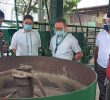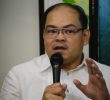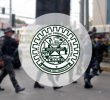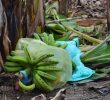Below is a press release sent by IDIS, a environmental group in Davao that is monitoring the marathon hearings on the injunction being sought by the banana companies against aerial spraying:
DAVAO CITY — A retired commercial airline pilot whose background includes waste management and pollution control testified Wednesday that even Deferential Global Positioning System-equipped airplanes used in aerial spraying doesn�t stop drift from reaching non-target areas.
Col. Napoleon Escolano Concepcion, a graduate of United States Air Force Academy with Civil Engineering degree-major in waste management and pollution control, also said that there is no machine or equipment which can control the speed or flow of any chemicals or liquids released by any airplane in flight.
Concepcion, who claimed familiarity with small planes, bi-planes, jet planes and commercial planes having been a commercial pilot and flight instructor pilot for 28 years, said DGPS is only an equipment used as a navigation aid.
Last week, the Pilipino Banana Growers and Exporters Association and two of its member companies�Davao Fruits Corporation and Lapanday Agricultural and Development Corporation�also presented a pilot, Angel Paz, to the witness stand. Like Concepcion, Paz also mentioned about DGPS, only that Paz said DGPS makes aerial spraying accurate.
�The DGPS is a precision satellite-based navigation system that accurately plots the plantation and guides the pilot in conducting aerial spraying,� Paz said.
But Concepcion, the last of the four witnesses presented by the city government in the legal battle against the PBGEA and its allies over aerial spraying, said that the DGPS is not an assurance that the people living inside and around banana plantations will be spared from the spray drift.
�In the absence of land reference stations, the accuracy of the DGPS is difficult to establish unlike in the United States where these land reference station have been installed. But despite the accuracies that they have under these ideal conditions, some states in the US have banned aerial spraying altogether,� Concepcion said.
Concepcion also said that it is impossible to contain the spray drift only in target areas knowing how the condition of the wind is changed by an aircraft in flight.
�The aircraft will naturally disturb the air currents. The propeller of the aircraft naturally creates a prop-wash. It moves the air according to the direction of the propeller. There will also be wing tip vortices naturally created by the two wing tips. These two forces combined will create the turbulence in the wake of the airplane,� Concepcion said.
Vortices, he explained, are created by the movement of the high pressure air below the wings of the aircraft towards the low pressure air on top of the wings. The effect of this, he said, are the presence of counter-rotating air currents on both tip wings moving down and outwards directions.
He further said the direction of the rotation of the propeller will certainly result to the imbalance distribution of spray while �the vortices create a swath much wider than the wing of the aircraft.�
These, he said, are the basic facts and knowledge in aerodynamics that all pilots must know.
The court battle over aerial spraying sparked when PBGEA petitioned the court for the issuance of a preliminary injunction, a move that came after the court did not allow the petition for the issuance of a temporary restraining order against the implementation of the aerial spraying ordinance.
The ordinance is set to be implemented on June 23, four months after it was approved by the city council.
IMPORTANT NOTICE: INBOX is an archive of press releases, statements, announcements, letters to the editors, and manifestos sent to Davao Today for publication. Please email your materials to davaotoday @ gmail.com. Davao Today is not responsible for the content of these materials. The opinion expessed in these items does not reflect those of Davao Today and its staff. Please refer to our terms of use/disclaimer.










